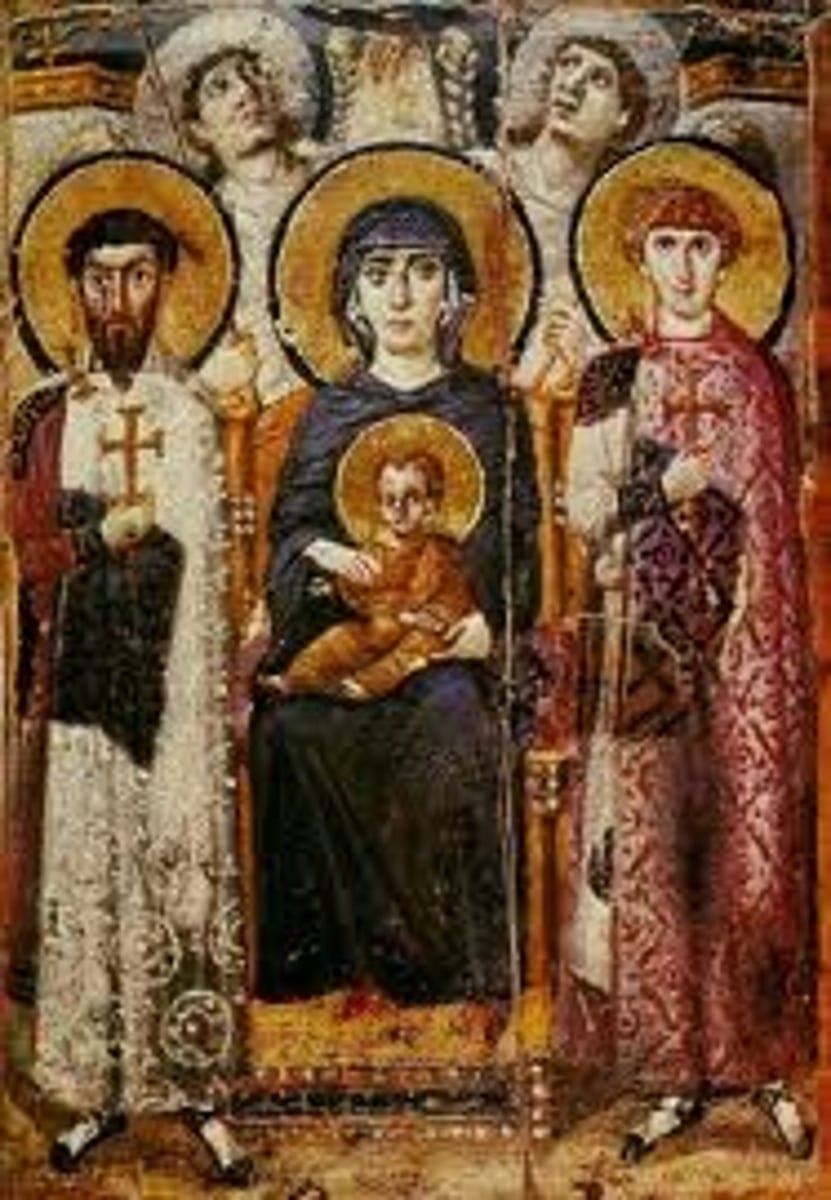AP Art History: Late Antique and Byzantine (U3: Early Europe and Colonial Americas)
1/12
There's no tags or description
Looks like no tags are added yet.
Name | Mastery | Learn | Test | Matching | Spaced |
|---|
No study sessions yet.
13 Terms
Catacomb of Priscilla
DOC: 200-400 CE
ROO: Rome, Italy
M: Tufa + Fresco
- tombs of several popes + christian martyrs
- poor buried in simple niches, rich buried in ornate sarcophogi
- popular pilgrimmage site
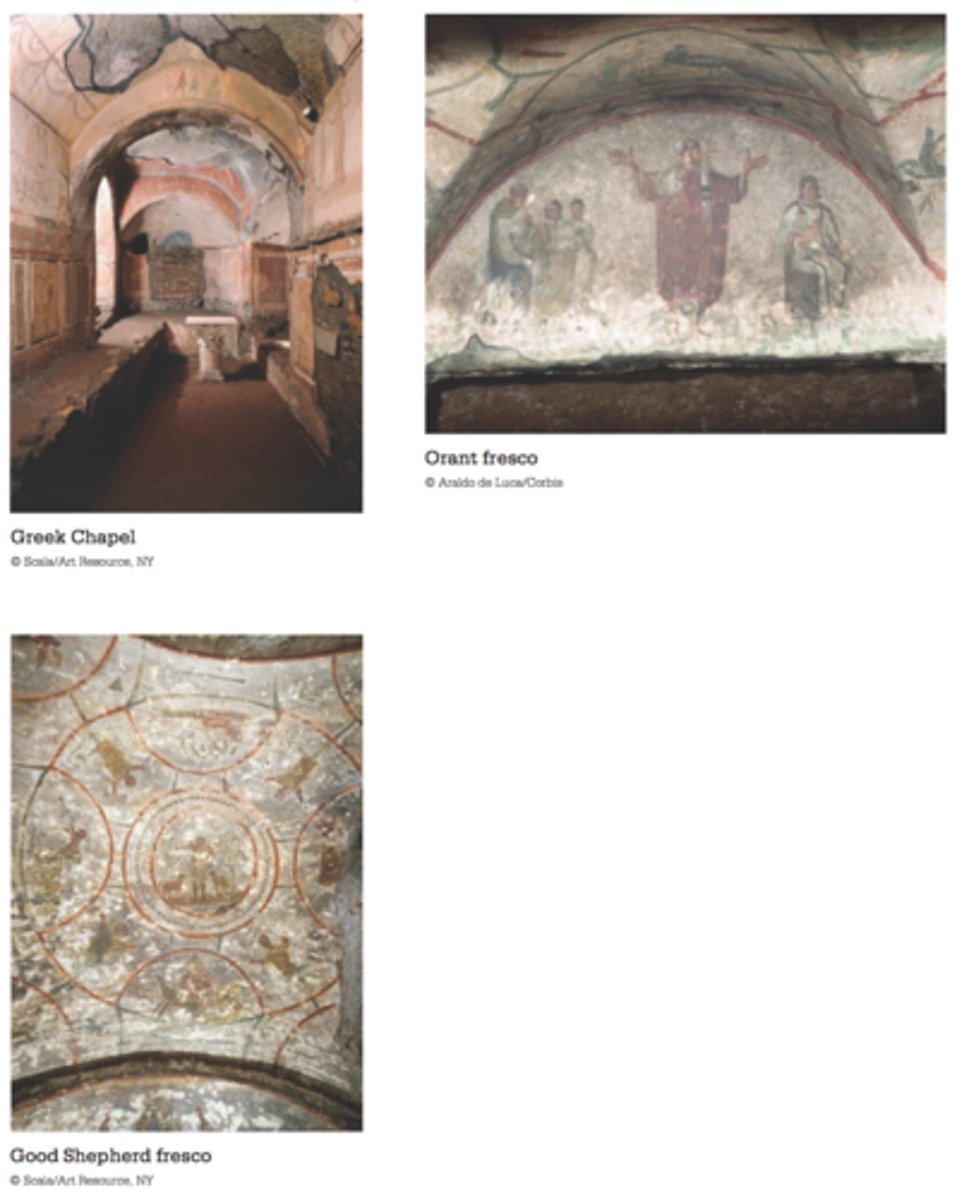
Greek Chapel (Catacomb of Priscilla)
- not a place of worship
- 3 niches for sarcophogi
- painted in pompeiian style
f(x):
- burial place for roman woman priscilla + 2 fam members
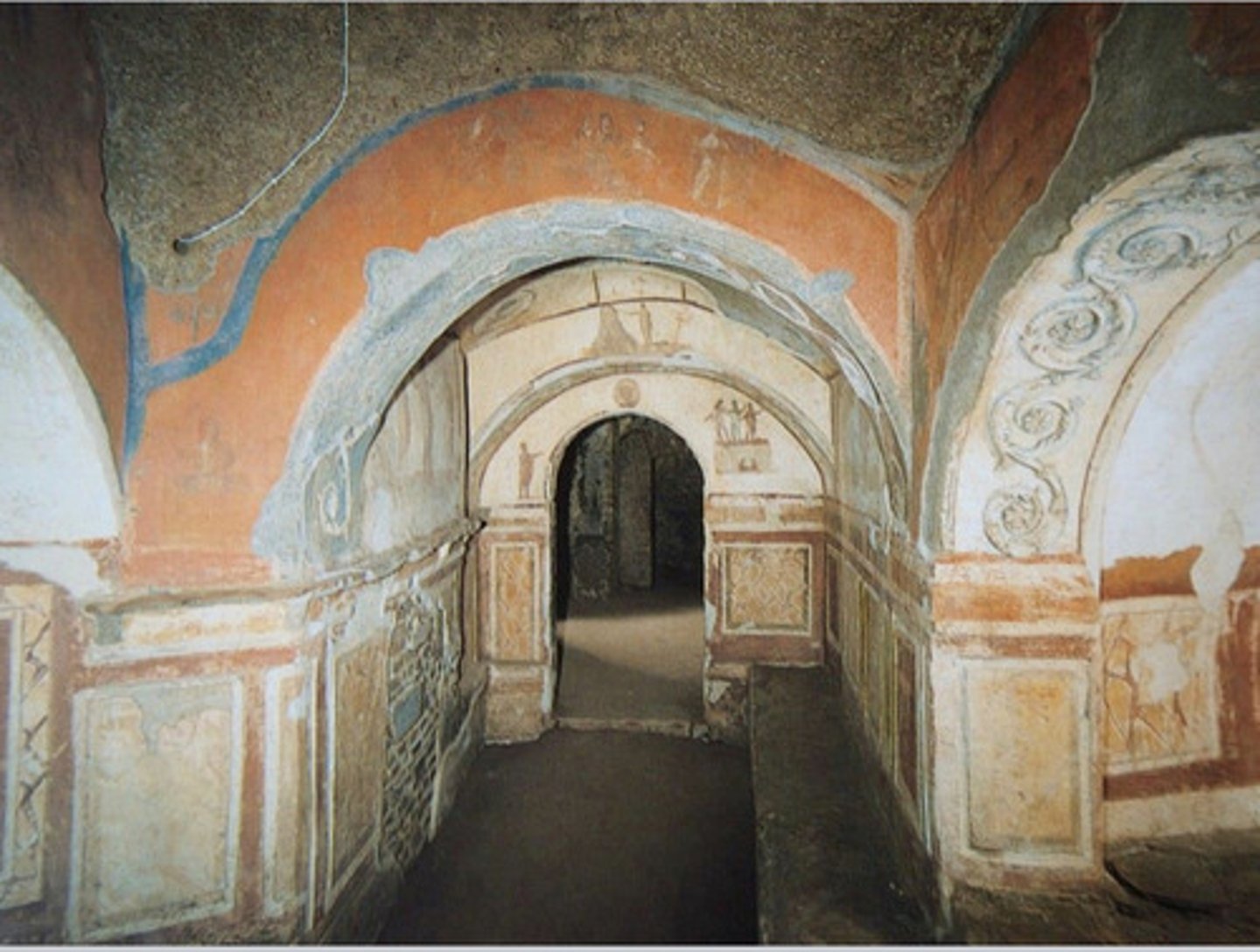
Orant Fresco (Catacomb of Priscilla)
- over a family tomb
- theory: shows cont. narrative of woman's life (marriage, motherhood, death)
- teaches what a good christian is
f(x):
- rep. either a fig. in prayer/ soul of the deceased
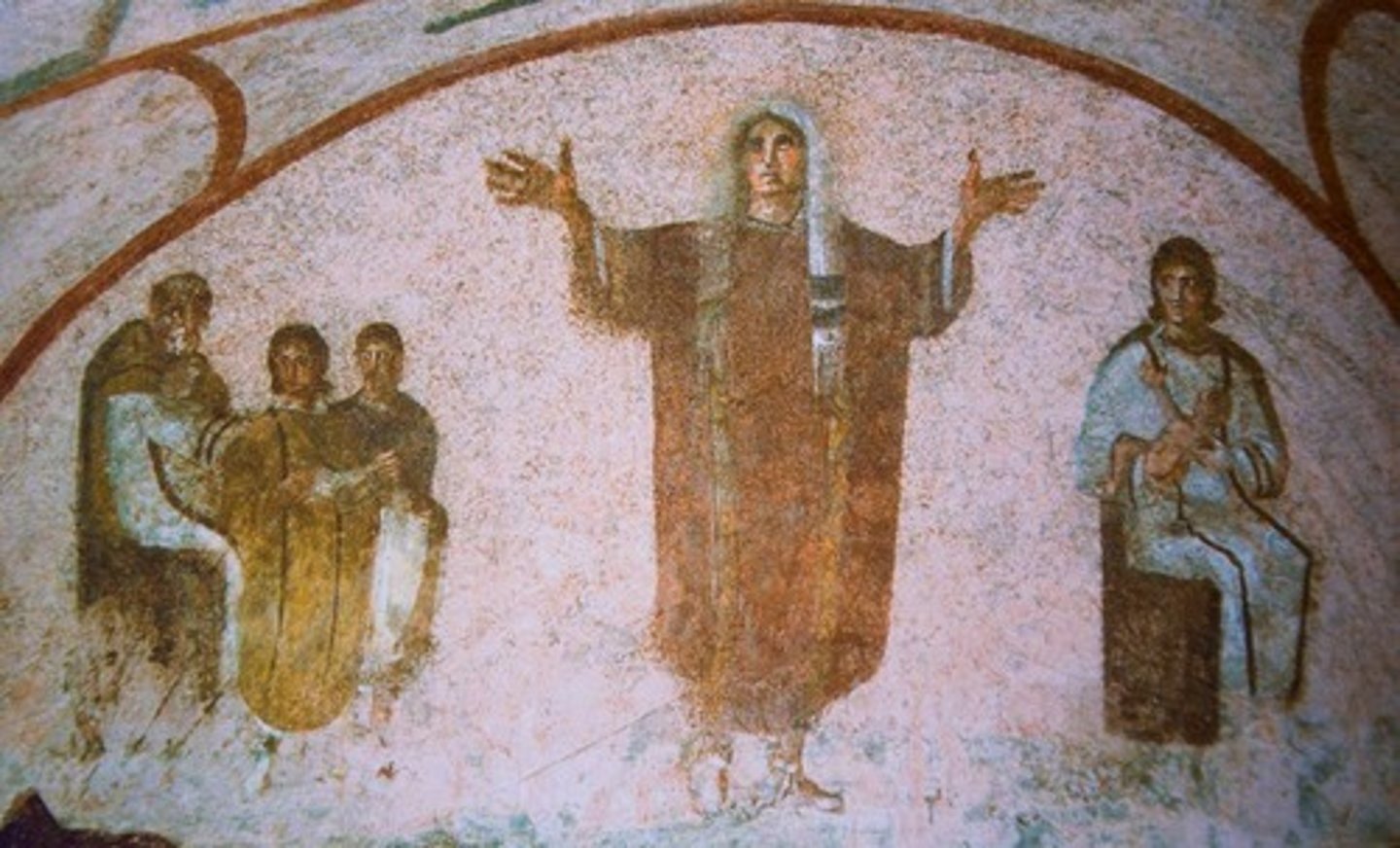
Good Shepherd fresco (Catacomb of Priscilla)
- shows Christ in a pastoral setting as a shepherd
- imagery of doves (peace)
- orant figures
- cruciform arrangement of images
- stories depicted in lunettes = events from Old Testament
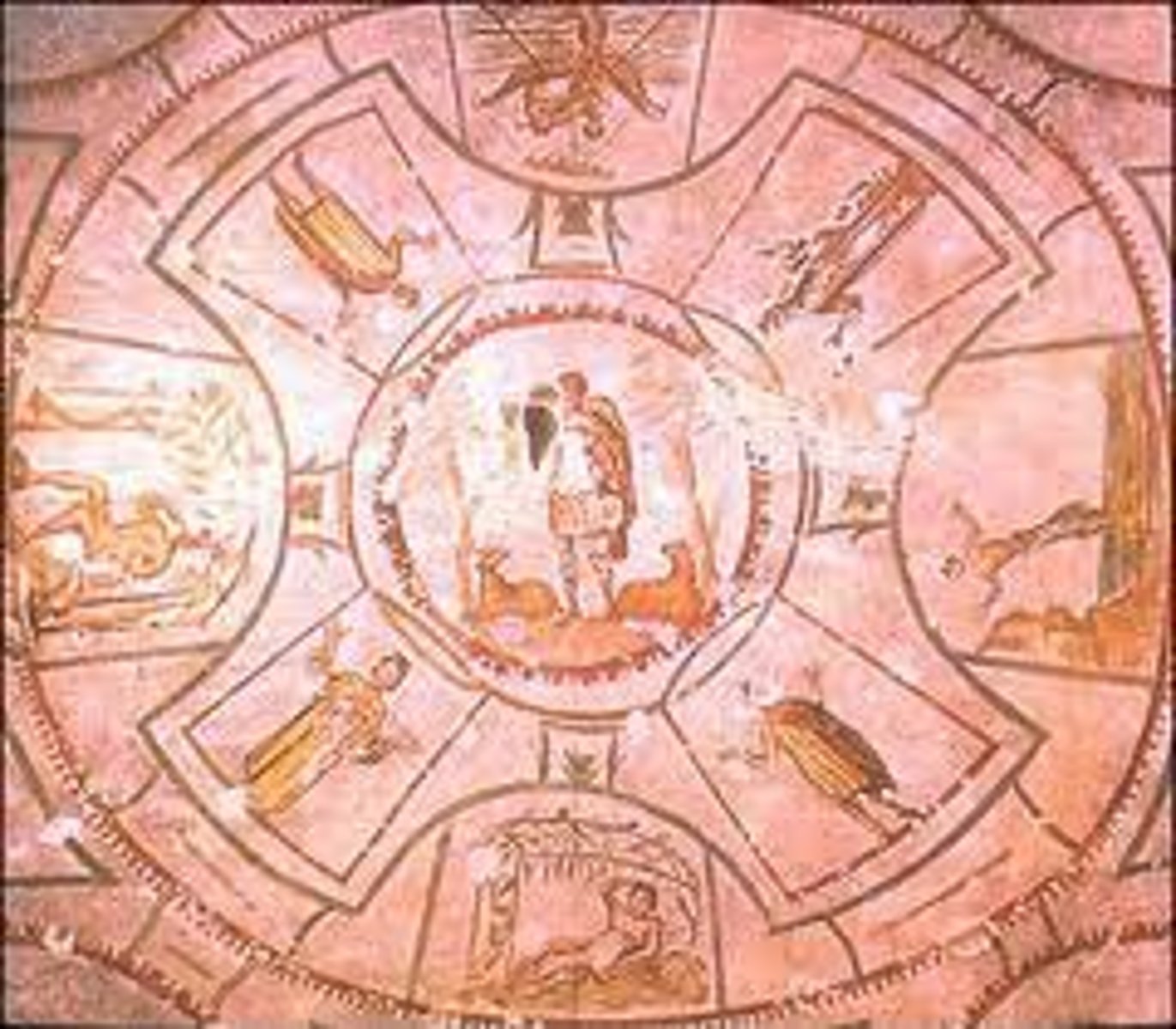
Santa Sabina
DOC: 422-432 CE
ROO: Rome, Italy
M: Brick, stone, wood roof
- basic exterior, v. pretty interior
- focus on creating airy, weightless space (God's light/creation)
- less focus on geo. forms defining spaces (man's creation)
f(x):
- Roman basilica --> place of worship
- martryium of St. Sabina
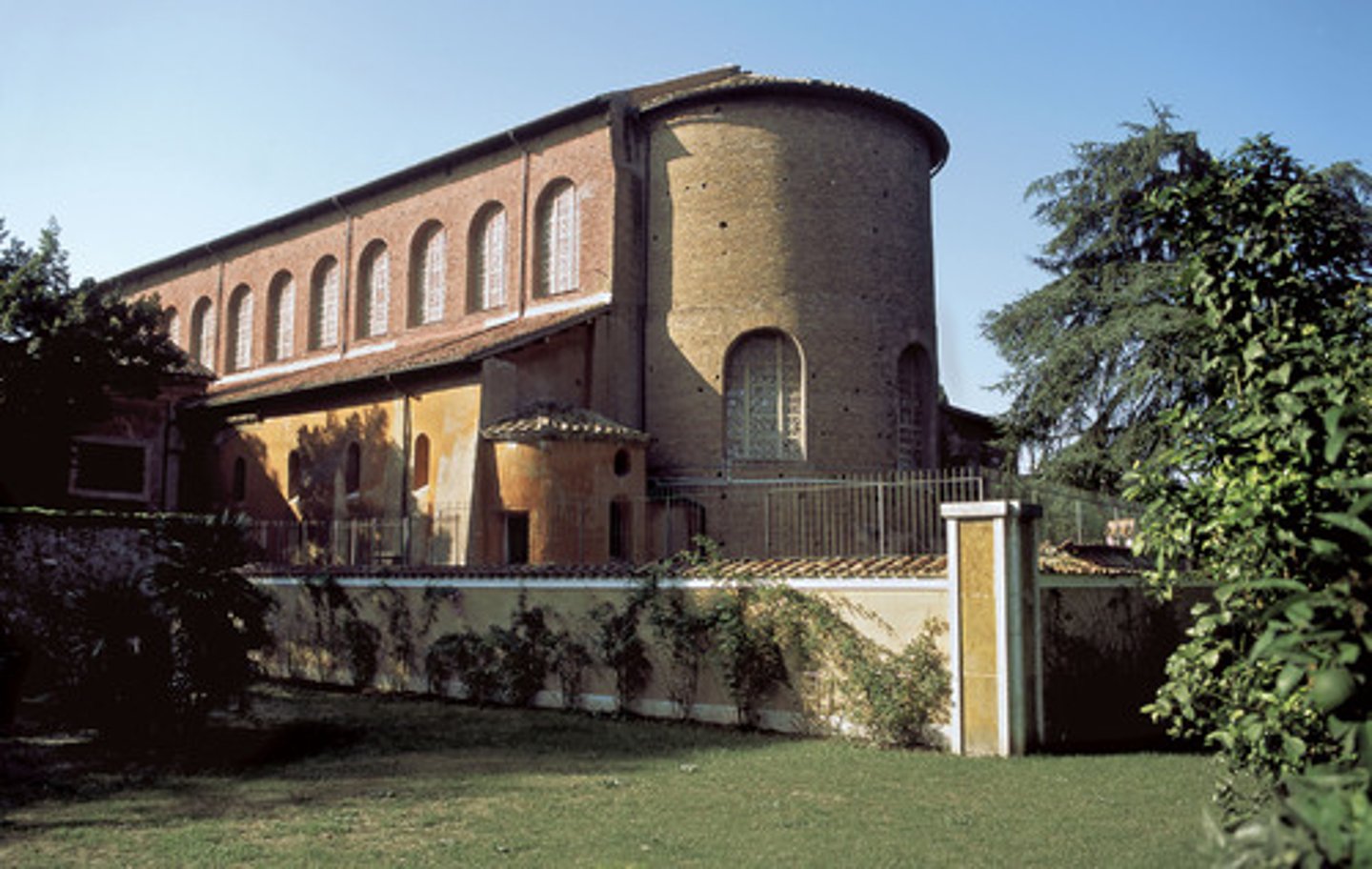
The Hagia Sophia
DOC: 532-537 CE
ROO: Constantinople (Istanbul, Turkey)
- name= holy wisdom
- dome supported by pendentives
- patrons: Emperor Justinian + Empress Theodora
- dome: 40 windows creating halo of light
- walls had mosaics, covered when became mosque
- Ottoman empire: added towers --> mosque
f(x):
- site of elaborate religious spectacles/worship
- center of the Eastern Orthodox world for centuries
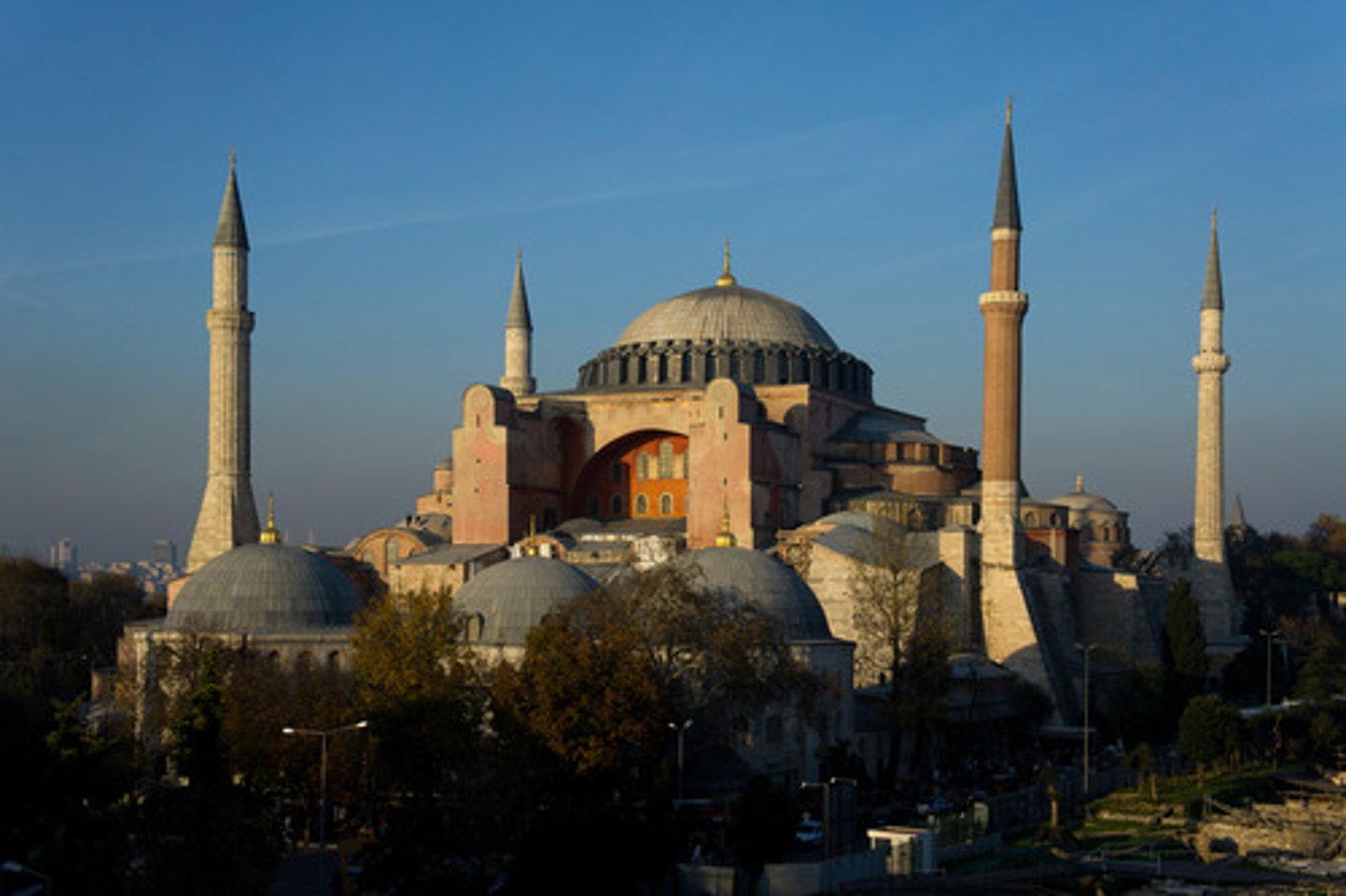
Basilica of San Vitale
DOC: 526-547 CE
ROO: Italy
M: Brick, marble, stone
- octagonal, centrally planned church
- Roman + Byzantine elements
- Roman: dome, mosaic
- Byzantine: column capitals, flying buttresses, airy interior
- several mosaics of Emperor Justinian + Empress Theodora
- lots of large windows to illuminate int.
f(x):
- martyrium
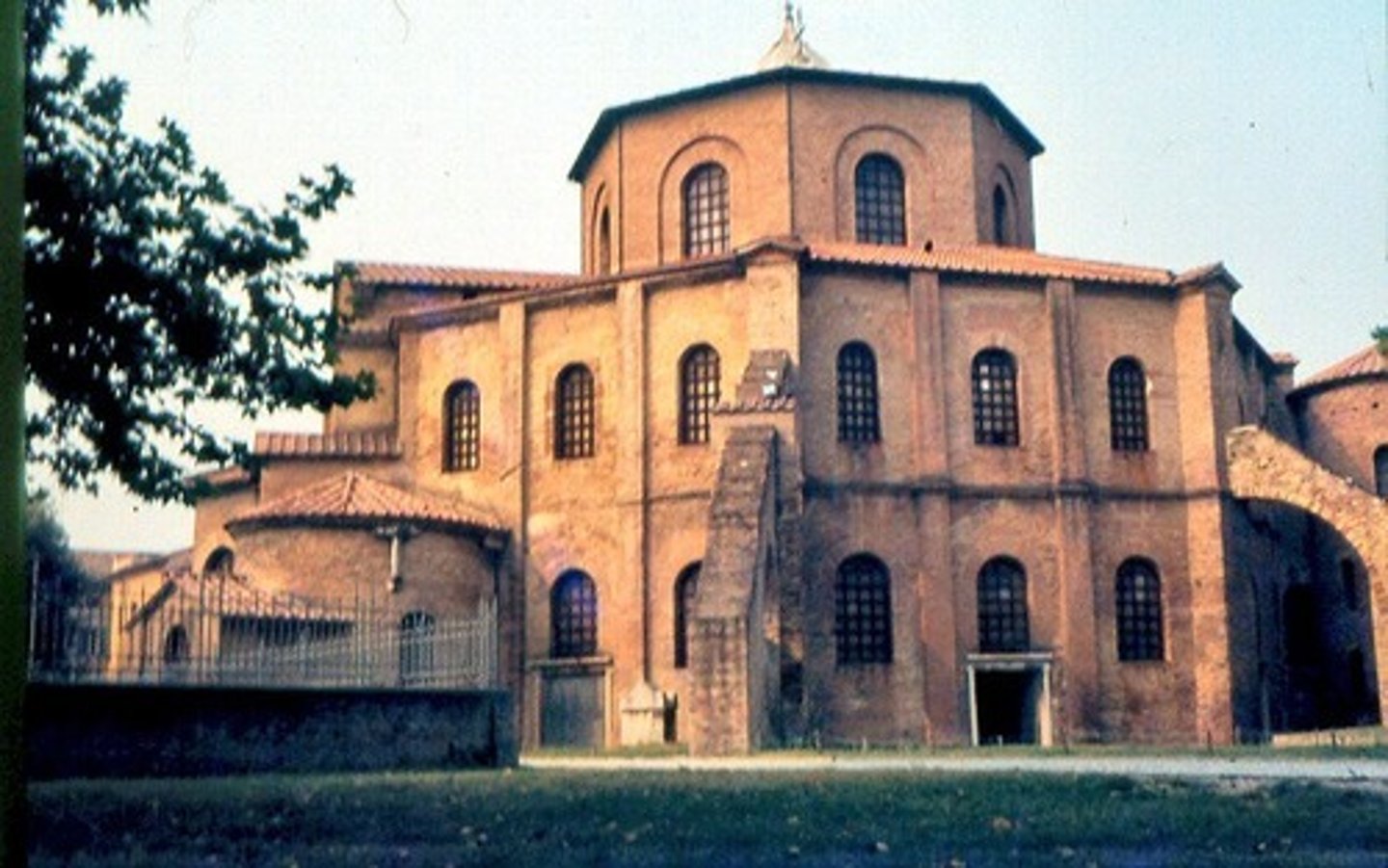
Justinian and Attendants (Basilica of San Vitale)
- mosaic
- RHS: clergy
- LHS: military + state officials
- shows Justinian as religious, military + political authority
- figs create symmetrical comp.
- Justinian robed in purple+gold, bearing halo --> shows his semi-divinity + royalty
- holds bowl for the Eucharist
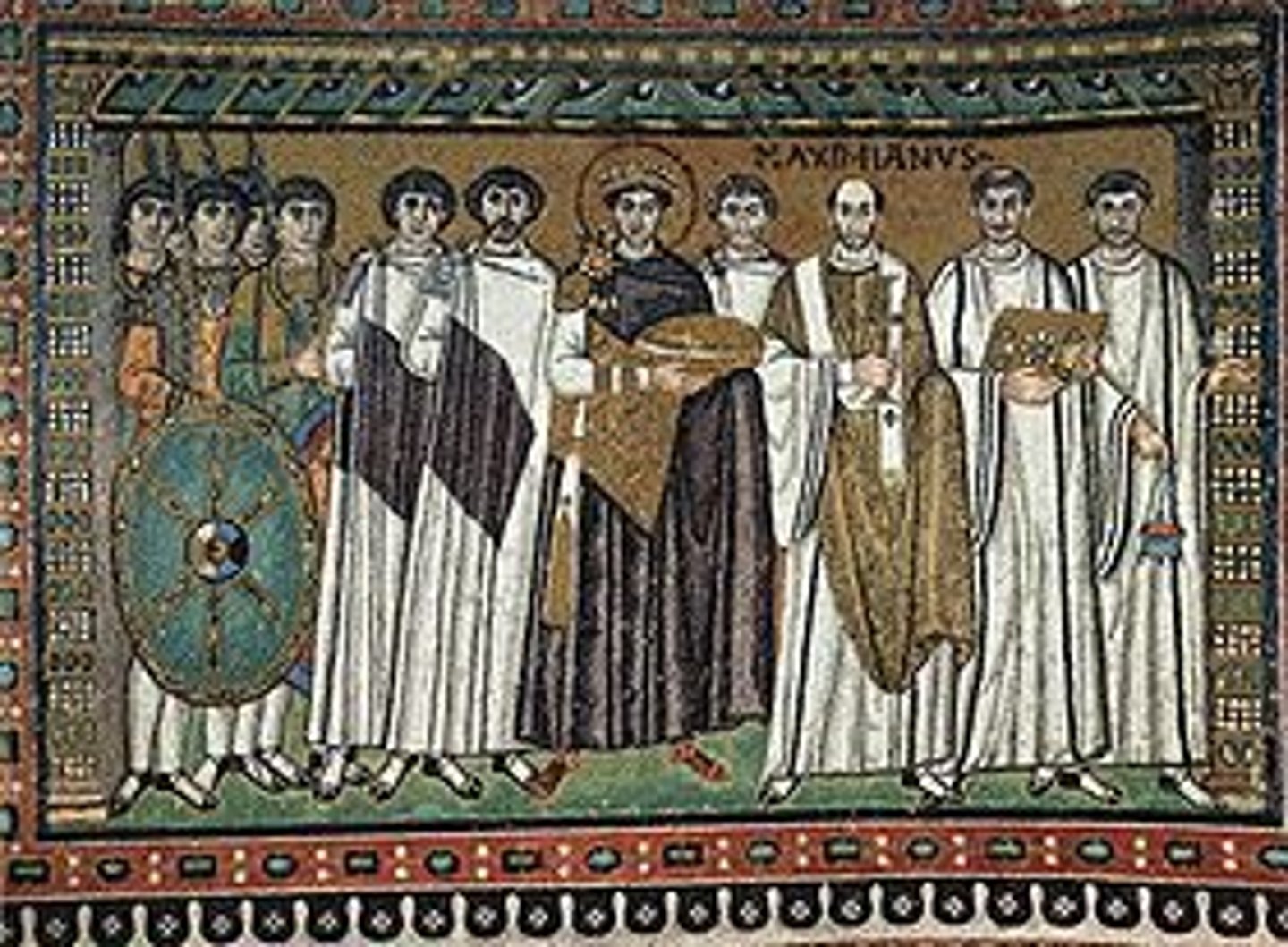
Theodora and Attendants (Basilica of San Vitale)
- mosaic
- she's flanked by her court, not symmetrically --> shows she doesn't play as central as a role as her husband
- heavily ornamented in jewelry, purple robe, 3 wise men on bottom hem of dress
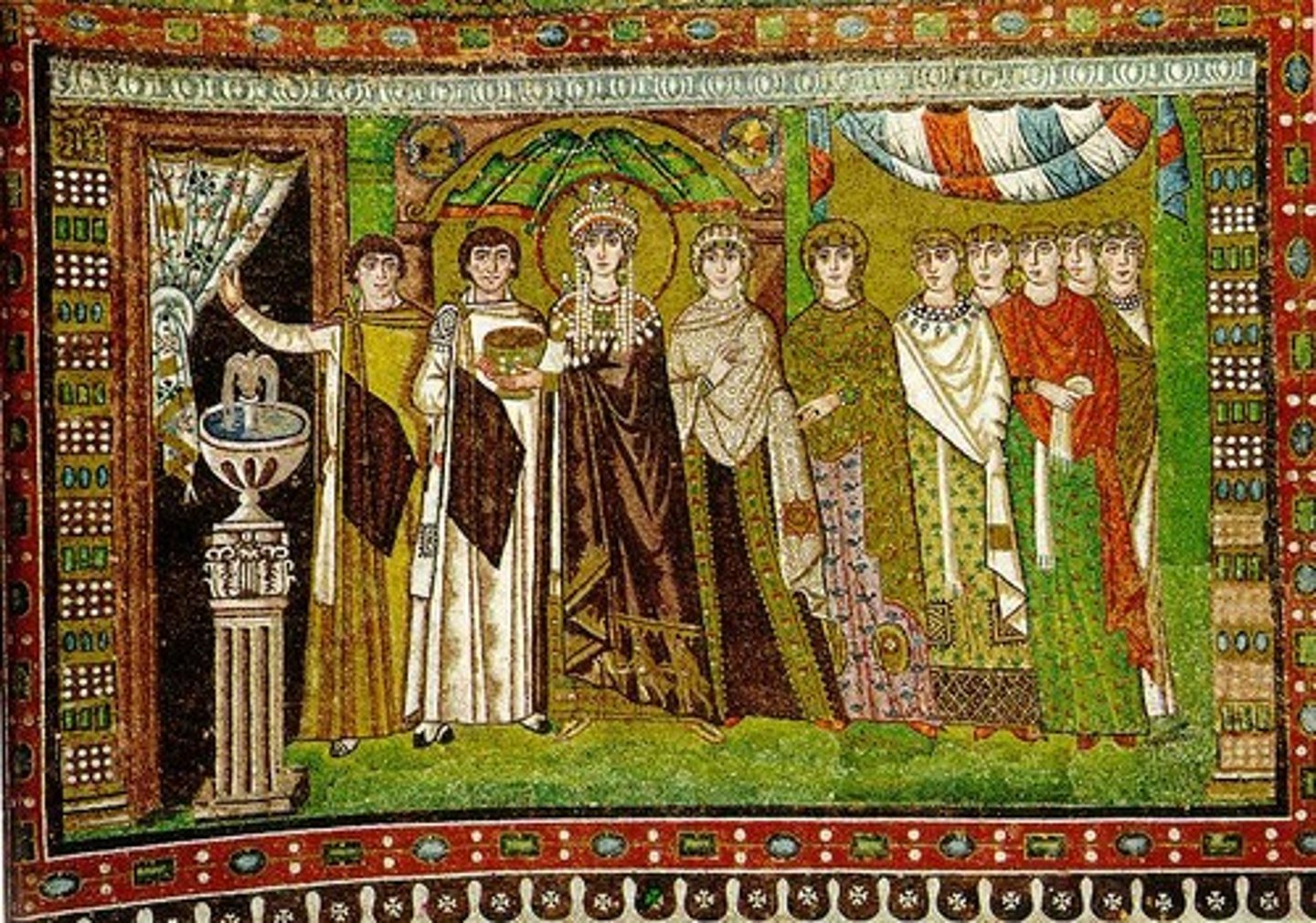
Vienna Genesis
DOC: early 700s CE
M: illuminated manuscript, pigment on vellum
- purple vellum w/silver script in Greek --> royal institution/patron
- cont. narrative: several events from a narrative in one frame
- figs: softly modeled, contrapposto, foreshortening
- BUT: setting's shallow, b/g lacks ground lines
--> shows society transition from classical convention --> Christian convention
f(x):
- illustrate events of Genesis
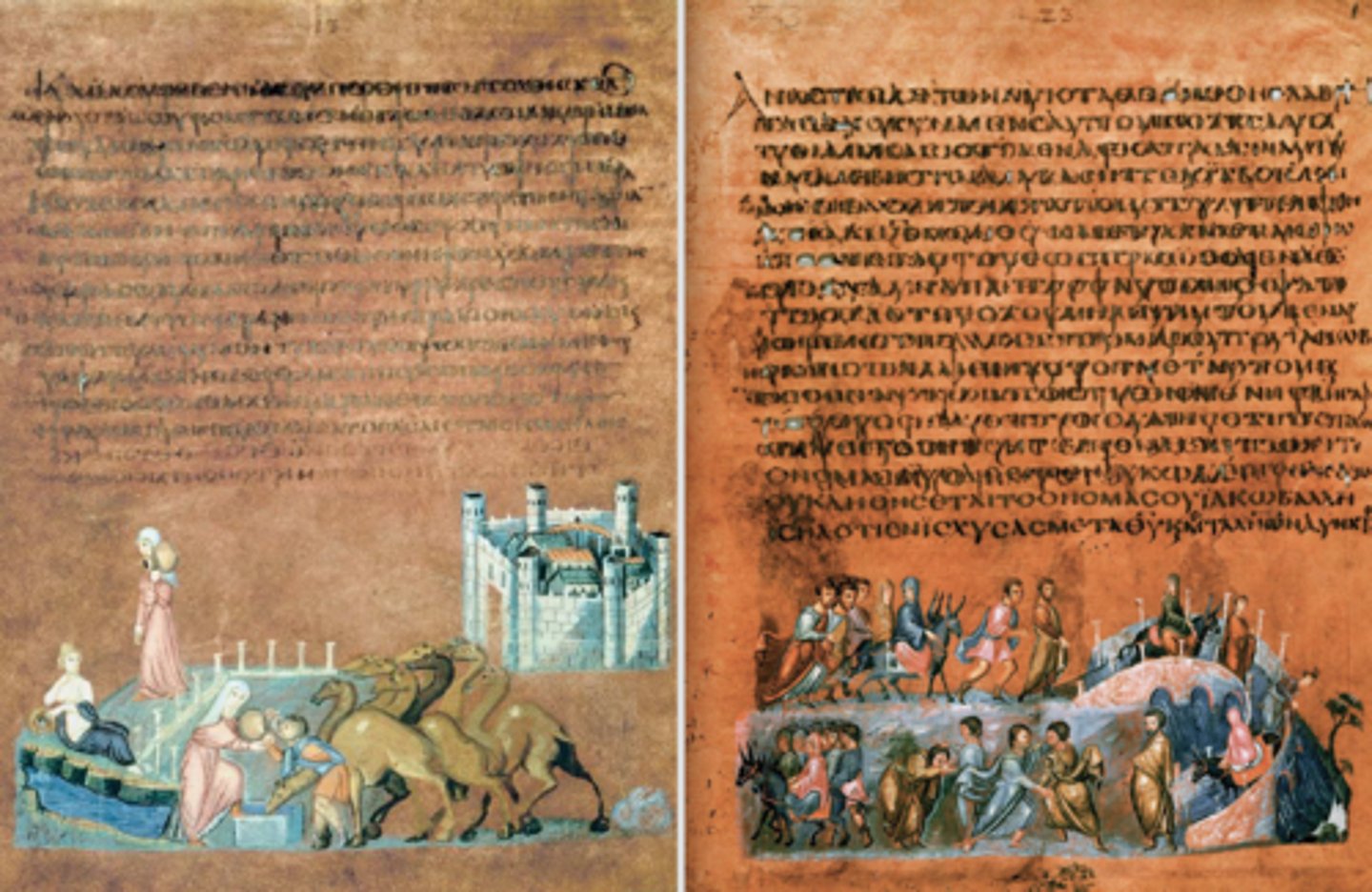
Rebecca and Eliezer at the Well (Vienna Genesis)
- Rebecca goes to spring for water (personified as Roman goddess)
- quenches thirst of camel drive/camels
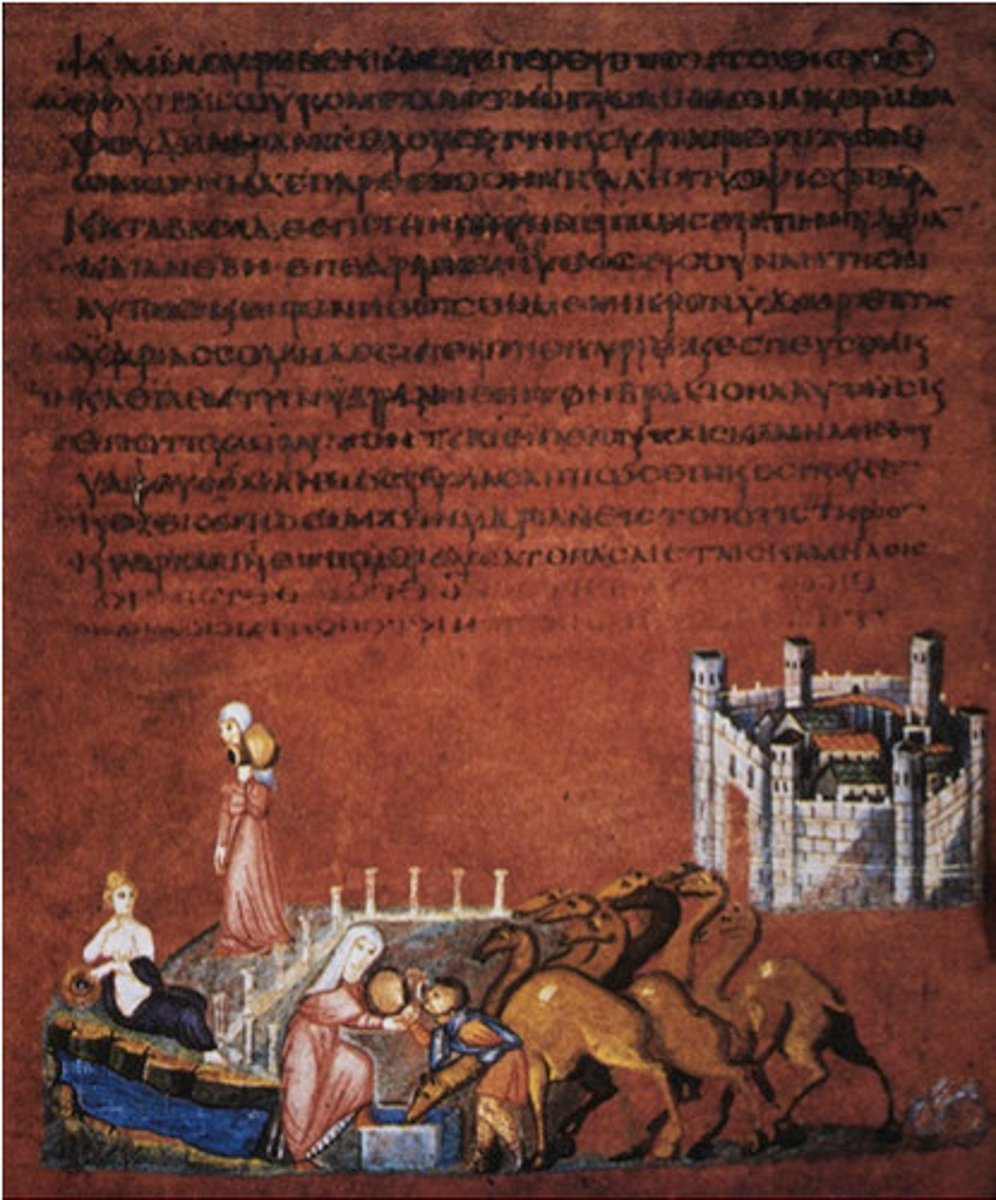
Jacob Wrestling the Angel (Vienna Genesis)
- jacob, his wives, maids, kids cross roman looking bridge
- ground lines create register like comp. connected by bridge
- show roman E (registers, arch) + Byzantine E (flattened spaces, heavily clothed figs)
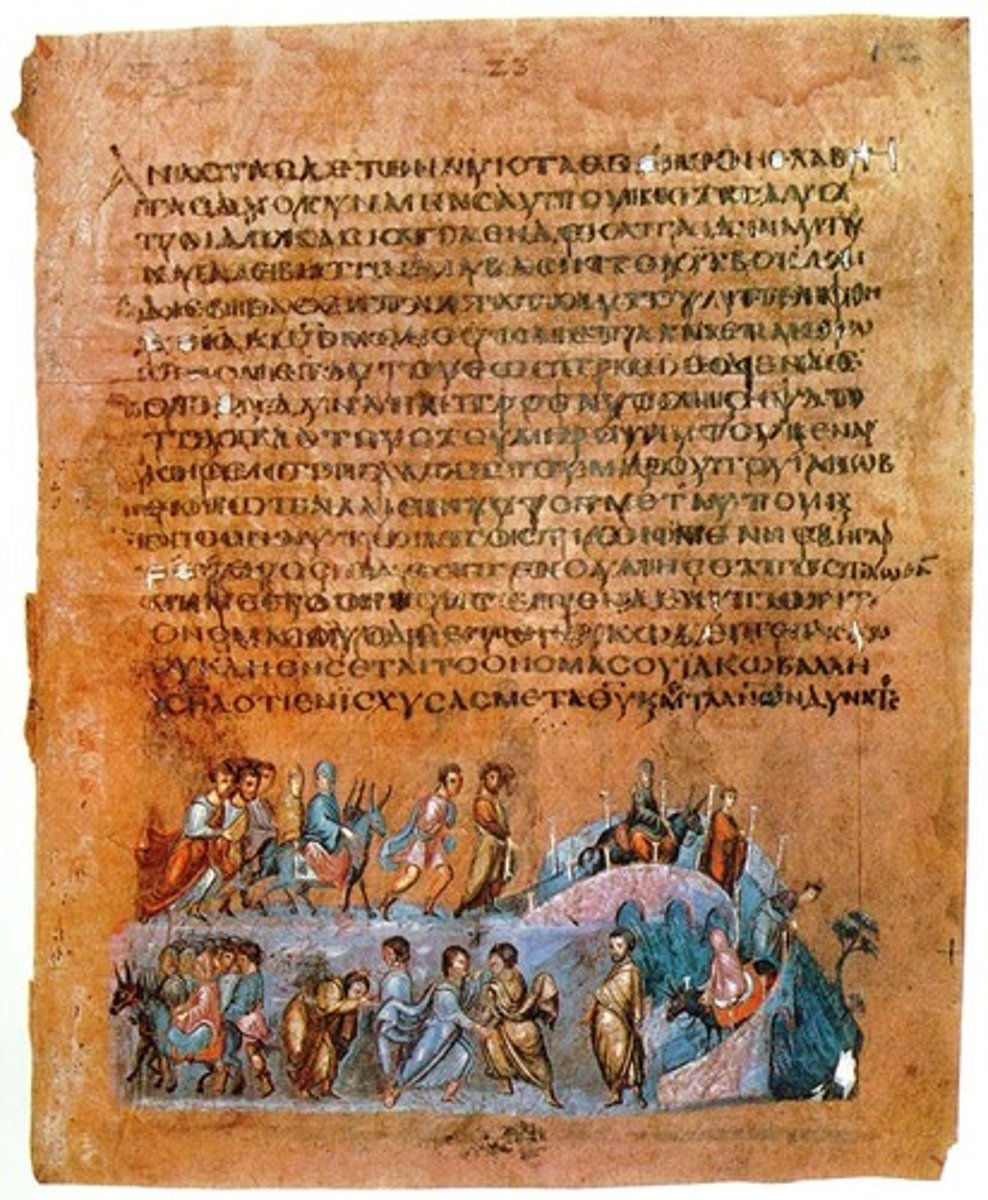
Virgin and Child between Saints Theodore and George
DOC: late 700s- early 800s CE
ROO: Sinai, Egypt
M: Encaustic on Wood
- example of an icon (rare b/c many destroyed in iconoclastic controversy)
- figs painted diff --> 2-3 artists worked
- some atmospheric + linear perspective
- tone: formal
- symmetrical comp. creates sense of divine order
- figs most important in foreground centrally
- all have halos --> divine
